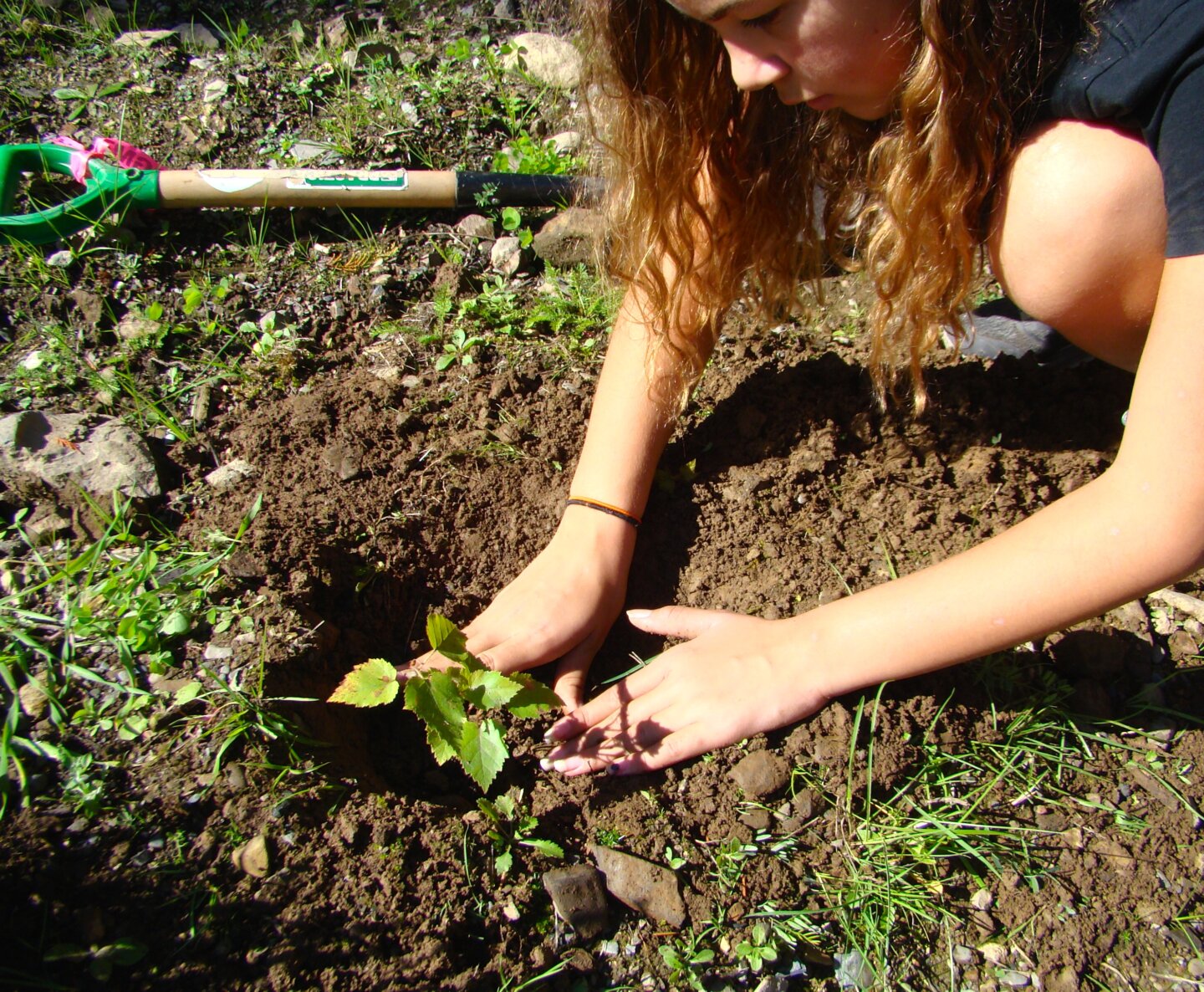An enthusiastic group of about 50 Nakusp Elementary School students, teachers and aides descended on the Snk’mip Marsh Sanctuary the morning of September 23rd for a massive planting bee in the warm fall sunshine. The day saw more than 300 native tree seedlings and shrubs put into the ground in recently restored areas of the sanctuary. The day’s events were organized by the Central Kootenay Invasive Species Society (CKISS) and hosted by the Valhalla Foundation for Ecology (VFE) which is the land trust and registered charity that stewards the nature sanctuary.
“We are very grateful for our partnership with CKISS, they have organized many planting events and weed pulls at Snk’mip in the past four years since we’ve owned the sanctuary property. Coordinator Laurie Frankcom does a great job liaising with the schools and the public and making the events at Snk’mip fun for the participants,” said VFE director Lorna Visser.
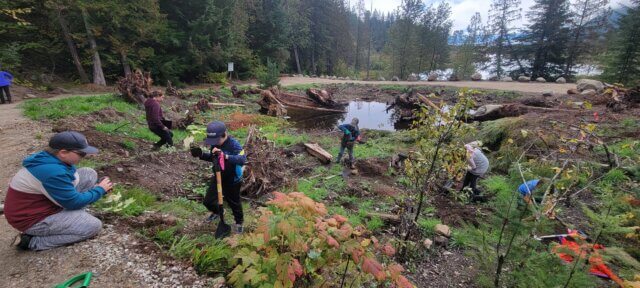
The students broke into teams and while one team was planting, others learned about invasive species and biodiversity using the newly created outdoor classroom area at the sanctuary.
“We are thrilled to once again partner with the VFE on restoration and community engagement efforts. Our partnership began in 2018 when we hosted a community weed pull as part of VFE’s Opening Ceremonies Event. The new outdoor classroom is an important venue for organizations like CKISS. When students are given the opportunity to learn in an outdoor setting like this they can gain an appreciation for wetlands and biodiversity. It allows us a chance to showcase that wetlands are vital aquatic and riparian ecosystems since they are important stopovers for migrating birds, they are home to many species at risk, and are important for water filtration, flood control, and they act as a carbon sink. We believe that when youth connect with nature they become good stewards of the land.” stated Laurie Frankcom , CKISS Education Program Coordinator.
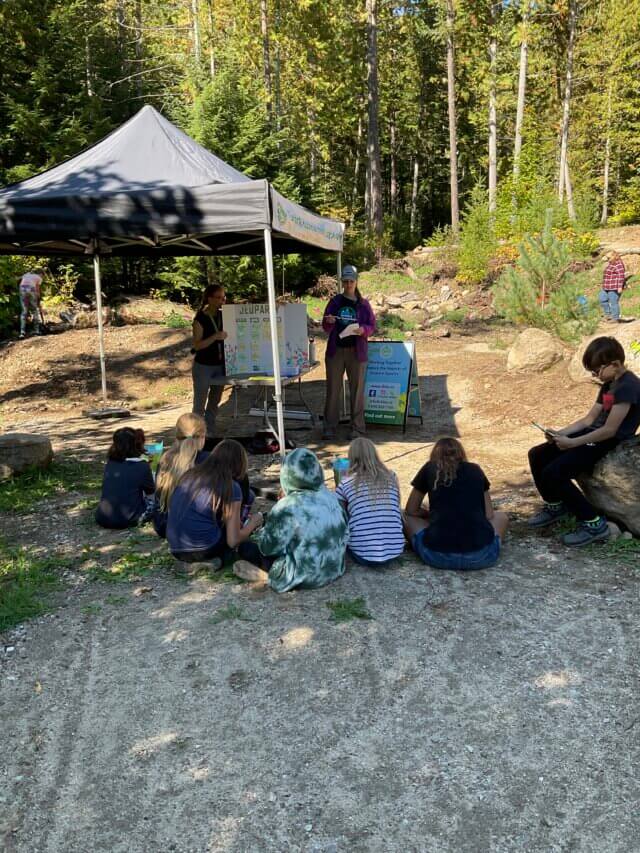
“Snk’mip is a welcoming place for learning and nature appreciation, we’re happy to host school groups whenever possible,” said VFE director Lorna Visser “To see the delight on the kids’ faces as they ran around outdoors on a beautiful fall day, all the exercise they were getting, and how they really dug in to get those plants into the ground was gratifying. They learned a lot, both experientially and from CKISS’s great activities such as an Invasive Species Jeopardy game.”
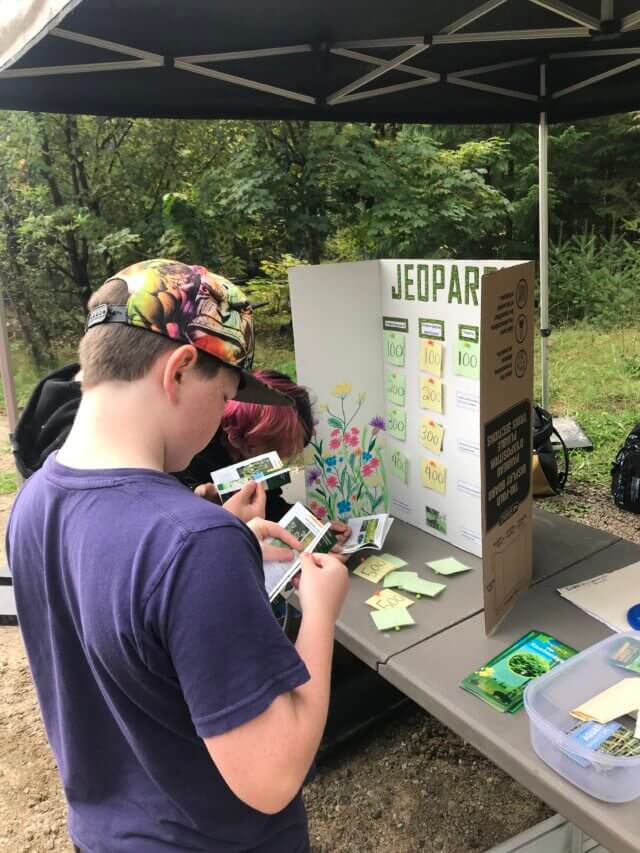
After the students departed by school bus back to Nakusp, a group of community volunteers arrived in late afternoon to help finish off the planting. Volunteers came from the New Denver and Hills area, Trail, Winlaw and Nakusp.
The plantings included traditional native food/medicine plants such as black hawthorn, blue elderberry, saskatoon, beaked hazelnut, thimbleberry and soopolallie which were requested be planted by a representative of the Autonomous Sinixt, the First People of this area. In addition, dogwood, nootka rose, mock orange, paper birch, bebbs willow and black cottonwood were planted as appropriate to the terrain. Later in the fall, other restored areas of the sanctuary including several kilometers of decommissioned road surfaces will be seeded with a native grass seed mix.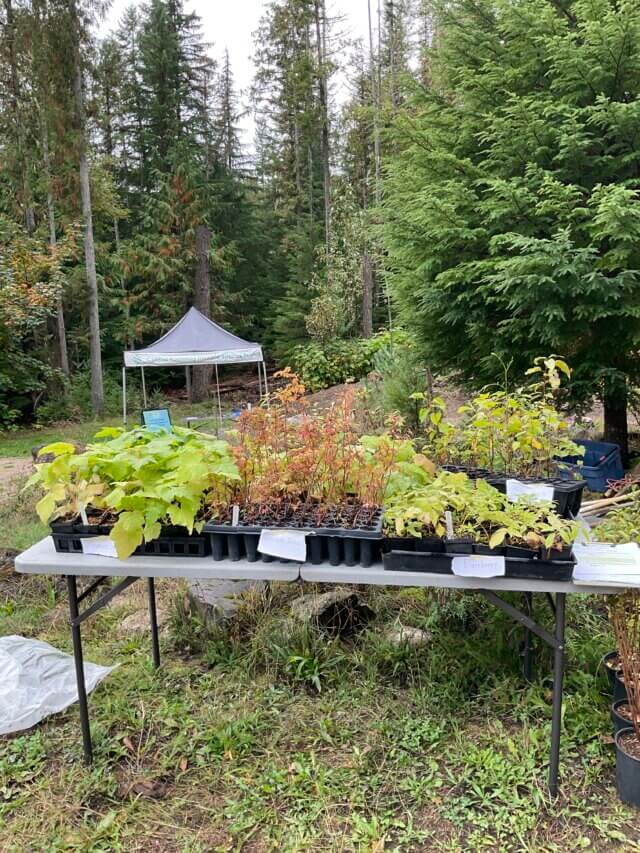
Ecological restoration work at the Snk’mip Marsh Sanctuary this summer included the construction of several easily accessible wetland ponds at which students can study insects, plants, amphibians and reptiles, the outdoor classroom area, a new pathway that is accessible for people with disabilities, and a fully-accessible marsh-overlook viewpoint.
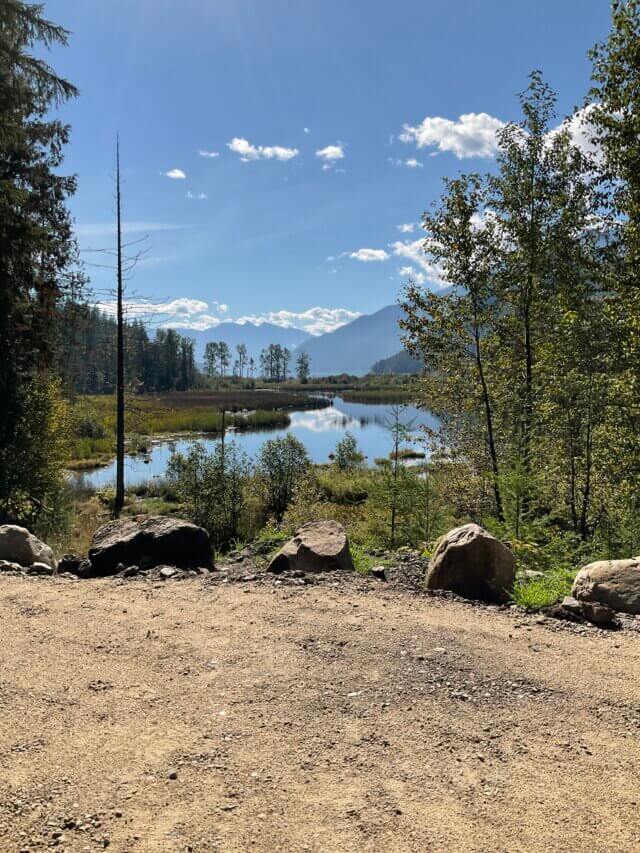
Thank you to Lorna Visser from the VFE for submitting content to use in the article to CKISS to use on our website.
This event was made possible with support from the following funders and partners:



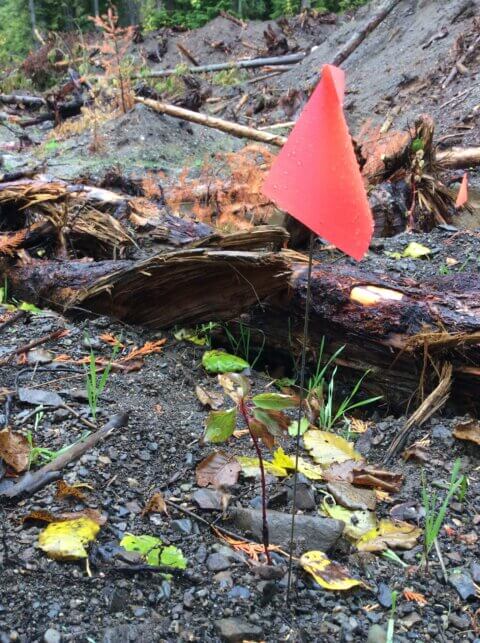
Monitoring of 2020 planting activities:
During the fall of 2020 local volunteers and students helped CKISS and VFE plant over 400 native plugs at the marsh. Each plant was flagged for monitoring purposes. CKISS staff revisited the site earlier in the spring of 2021 and were pleased with how many of the native plans had survived, they found that 334 plants were still alive and thriving. That is a 83% survival rate, truly amazing. This proves how productive this area is! We believe that native plant revegetation will protect water quality and increase eco system health.


